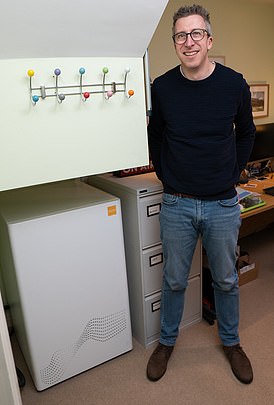Is THIS the future of boilers? Forget heat pumps – how 'zero emissions boilers' could be the appliance of choice for homeowners who don't have the space or money for the more expensive alternatives
A new 'zero-emission boiler', which cost £8,000 to buy and install, was today presented as the way of the future – especially for those who found heat pumps too expensive or impractical.
The model, designed by a Berkshire start-up called Tepeo, is described as a 'heat battery' that can hold electricity for days after consuming it cheaply and greenly.
The boilers are a white box filled with iron ore that work by using electricity to heat a thermal storage core, which will then heat the pipes running through it.
The unit, known as a 'Zeb', is programmed to draw electricity from the grid at cheaper times of the day or when there is less carbon, and the ore stays warm for days.
It can then release heat to the radiators and water tank as needed, with supply and demand controlled by a system based on the owner's requirements.
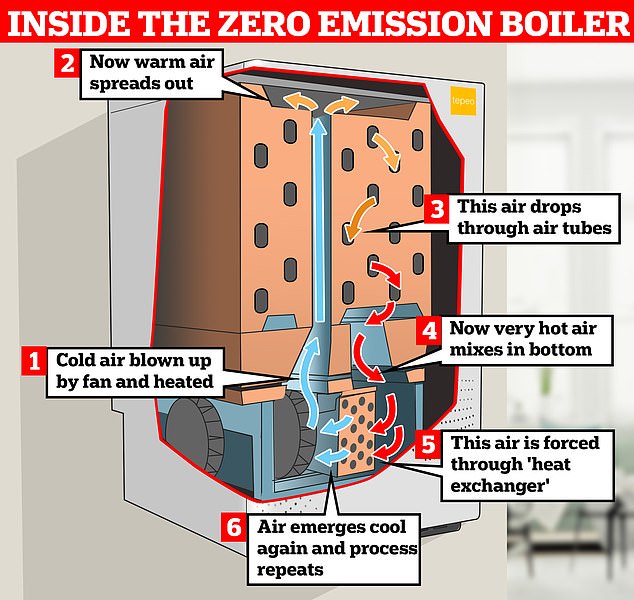
A new 'zero emissions boiler', which cost £8,000 to buy and install, was today presented as the future
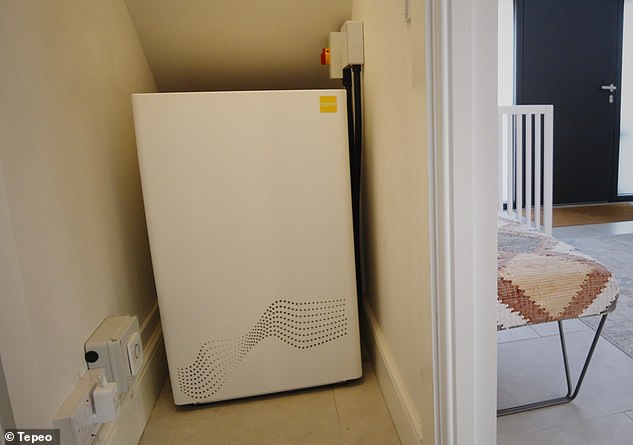

The new 'zero emissions boiler' designed by start-up Tepeo will cost £8,000 to buy and install
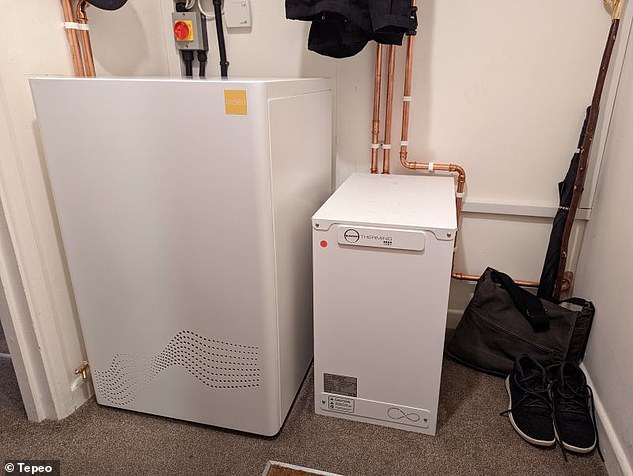

The 'heat battery' can store electricity for days after ingestion, if it is cheap and green
Although less than 1,000 units have been sold to date, Tepeo now aims to expand by doubling production capacity and is targeting 1,200 sales in the coming year.
One of the main competing products is the air source heat pump, which can cost between £8,000 and £18,000, although people can get a £7,500 rebate through the Government Boiler Upgrade Scheme.
Tepeo founder Johan du Plessis told the Sunday Times that he now wants his product also included in the scheme, which would significantly reduce the cost from the current price tag of £6,000 plus a £2,000 installation fee.
Mr du Plessis described his idea as a “pragmatic” way to “decarbonise urban areas with flats and terraced houses, where people don't have the space”.
Referring to the government's 2050 Net Zero target, he told the newspaper: 'Heating is the biggest challenge we have in reaching net zero. We have 27 years to decarbonize 27 million homes.”
The Zeb works by charging using low-carbon electricity and then delivering heat to the home when needed, with a smart charging algorithm that aims to calculate when and how much to charge based on the owner's energy tariff.
The electric heating elements in the Zeb charge a core, with the company's technology then releasing this heat when a thermostat requires it.
It uses machine learning to calculate when and how much to charge during the day and also takes into account local weather forecasts to make predictions about usage.
The device can also recalculate charging throughout the day, while users can manually change how much is charged.
The majority of charging takes place between 12:30am and 4:30am for the lowest cost and lowest CO2 energy, with the company claiming the boiler can use that heat for the rest of the day.
It comes amid a government push to move Britain away from gas central heating, used by three-quarters of homes, and greener heat pumps.
Ministers said last month that more homes will have access to heat pumps after pledging a further £1.5 billion for the Boiler Upgrade Scheme.
The scheme provides government grants of up to £7,500 for the installation of air and ground source heat pumps and up to £5,000 for biomass boilers.
The government has set a target of installing 600,000 heat pumps annually by 2028, despite only 72,000 installed by 2022 – meaning the pace needs to increase by 733 percent.
The units are popular in Europe and are seen as more environmentally friendly than oil or gas boilers because they are electrically powered and therefore produce fewer greenhouse gases when they run.
They also have an energy efficiency of up to 400 percent, meaning they can emit four times as much energy in the form of heat as in electricity.
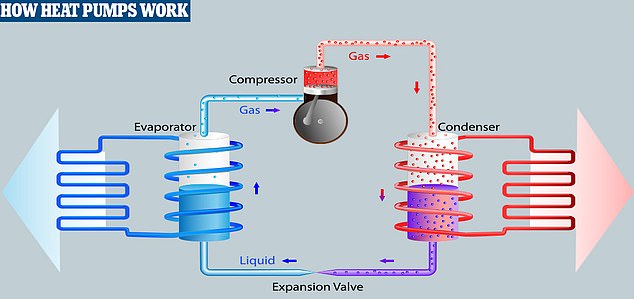

Heat pumps run on electricity and capture heat from outside before transporting it inside
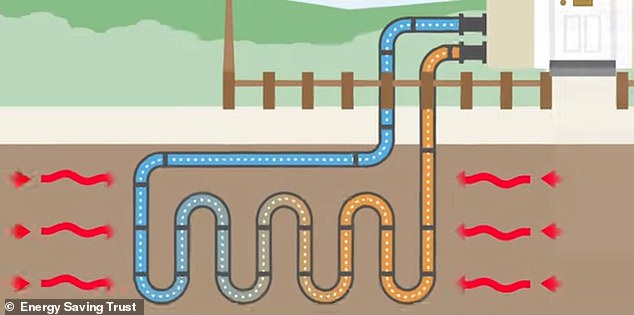

Geothermal heat pumps circulate a mixture of water and antifreeze around a ground loop pipe. Heat from the ground is absorbed into the liquid and then passes through a heat exchanger. Operating costs depend on the size of the house.
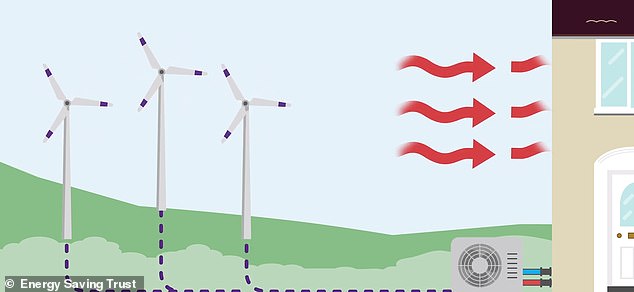

Air source heat pumps absorb heat from the outside air at low temperatures into a fluid to heat your home and hot water. They extract sustainable heat from the environment, so that the heat yield is greater than the electricity input
But Britain is lagging behind some European countries in installing heat pumps; France installed more than 600,000 last year.
Only 1 percent of British homes currently have a heat pump, compared to 60 percent in Norway.
The Climate Change Committee estimates that to achieve Net Zero, at least half – but probably closer to 80 percent – will require domestic heat pumps by 2050.
But there are ongoing concerns about their rollout as they are still expensive and may not work as well for poorly insulated properties as they operate at lower temperatures than boilers.
Homeowners installing a heat pump in their home will therefore need good wall and loft insulation, as well as double glazing, and may also need larger radiators to maximize heat distribution.
A ground source heat pump also needs outdoor space to bury pipes, while both types of heat pumps also require a hot water boiler.

